You’ll uncover how to change your small living room into a serene sanctuary by embracing Japandi style, where Japanese minimalism meets Scandinavian comfort. This design approach isn’t just about aesthetics—it’s a practical solution for maximizing space while creating a warm, inviting atmosphere. From selecting the perfect neutral palette to incorporating natural materials, these 18 ideas will help you achieve that perfect balance of functionality and tranquility. Let’s examine how you can bring this harmonious style into your home.
Essential Elements of Japandi Design Philosophy
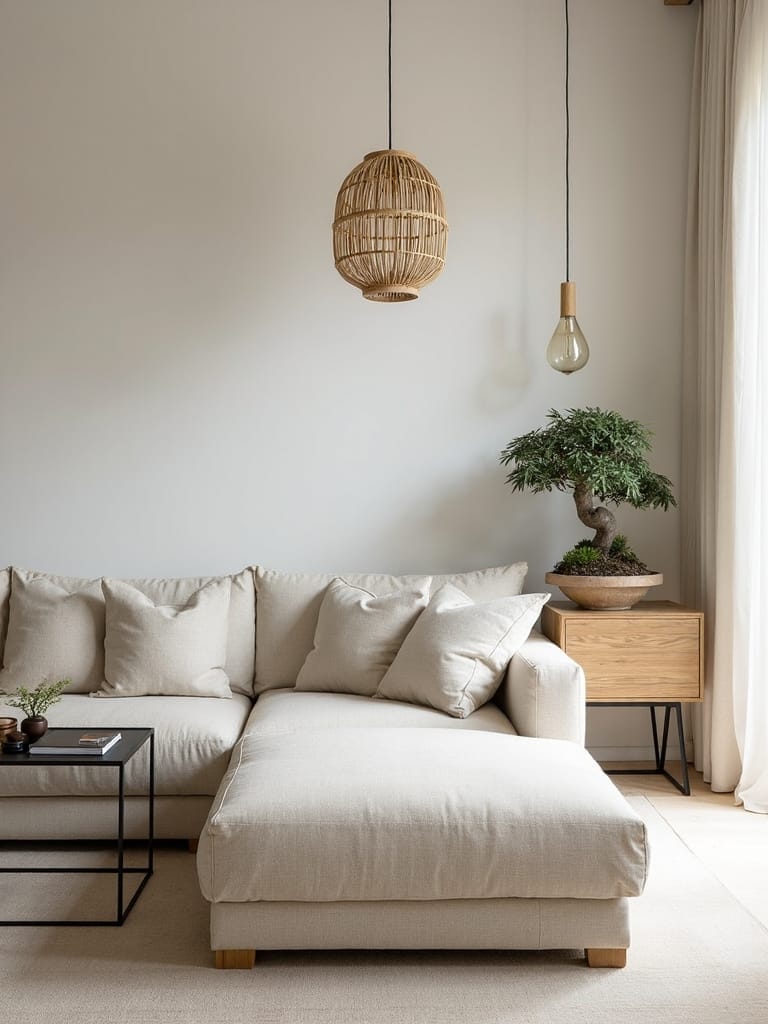
Harmony lies at the heart of Japandi design, blending Japanese minimalism with Scandinavian functionality to create serene, purposeful spaces.
You’ll want to adopt a neutral color palette with soft whites and earthy tones while incorporating natural materials like wood and stone.
The style’s foundation rests on clean lines and functional design, where minimalist furniture meets textural contrast, all while celebrating Wabi-Sabi’s beauty in imperfection.
Creating a Minimalist Foundation

When establishing a minimalist foundation for your Japandi-style living room, start with a carefully curated neutral color palette that sets the tone for the entire space.
Choose soft whites, beiges, and greys to create a serene environment that feels open and inviting.
Select minimalist furniture with clean lines and incorporate natural materials like wood and stone.
Add cozy elements through textured throws and cushions while maintaining the Japandi aesthetic through thoughtful decluttering.
Implementing a Neutral Color Scheme

A successful Japandi-style living room begins with a thoughtfully chosen neutral color palette that creates visual harmony and spaciousness.
Start with soft whites, beiges, and pale greys to establish a serene atmosphere, then layer in earthy colors like rusty browns and muted greens as accents.
You’ll find this minimalist aesthetic particularly effective when combined with natural textures, creating a cohesive design that embodies the Japandi philosophy of simplicity.
Maximizing Natural Light in Small Spaces
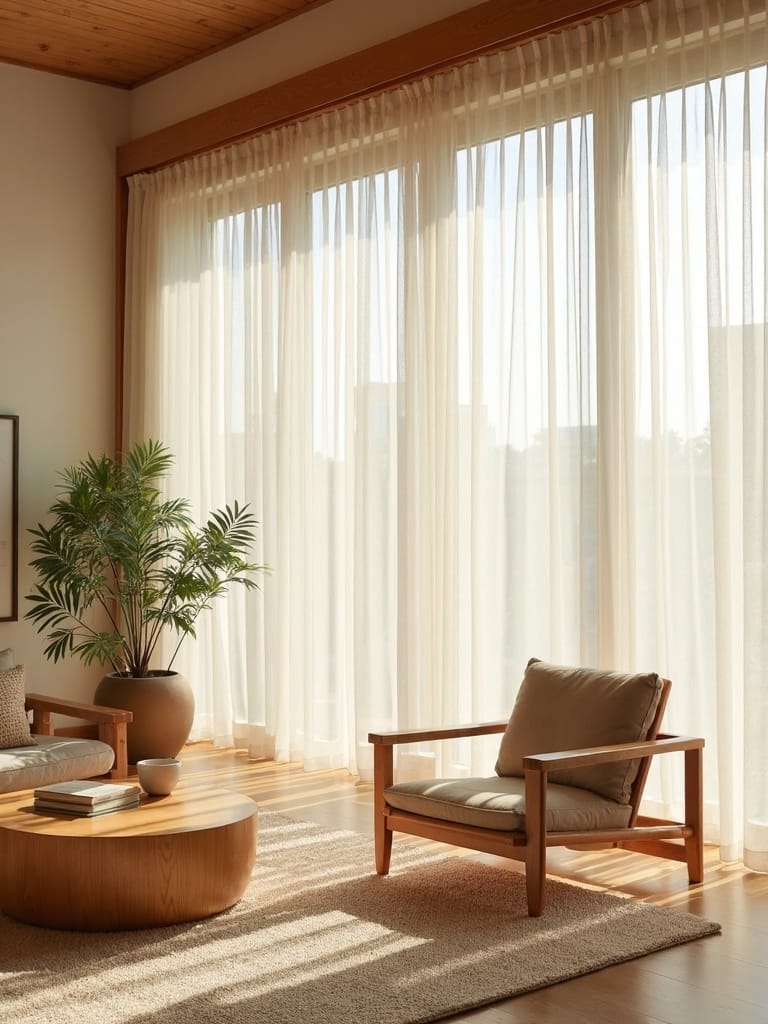
Natural light changes a small Japandi living room from a confined space into an open, inviting sanctuary.
To maximize natural light, keep window areas unobstructed and opt for sheer curtains that provide privacy while welcoming sunshine.
Choose light-colored walls and low-profile pieces to reflect light throughout the space.
Position mirrors strategically and adopt minimalist design principles to create an airy, expansive atmosphere.
Selecting Low-Profile Furniture Pieces

Low-profile furniture serves as the foundation of a well-designed Japandi living room, creating an open and harmonious atmosphere in compact spaces.
When you’re choosing pieces, look for clean lines and minimalist designs that embody simplicity and functionality.
Opt for multifunctional items like storage ottomans or low-slung benches that maintain the Japandi aesthetic while establishing a grounded connection to nature.
Incorporating Natural Wood Elements

Wooden elements serve as the heart and soul of Japandi interior design, bringing essential warmth and organic beauty to your small living room.
By incorporating light woods like oak and ash into your Japanese-Scandinavian space, you’ll create a cozy atmosphere that celebrates clean lines and natural textures.
Mix different wood tones through furniture, shelving, and slatted screens to add depth while maintaining a harmonious flow.
Balancing Light and Dark Tones
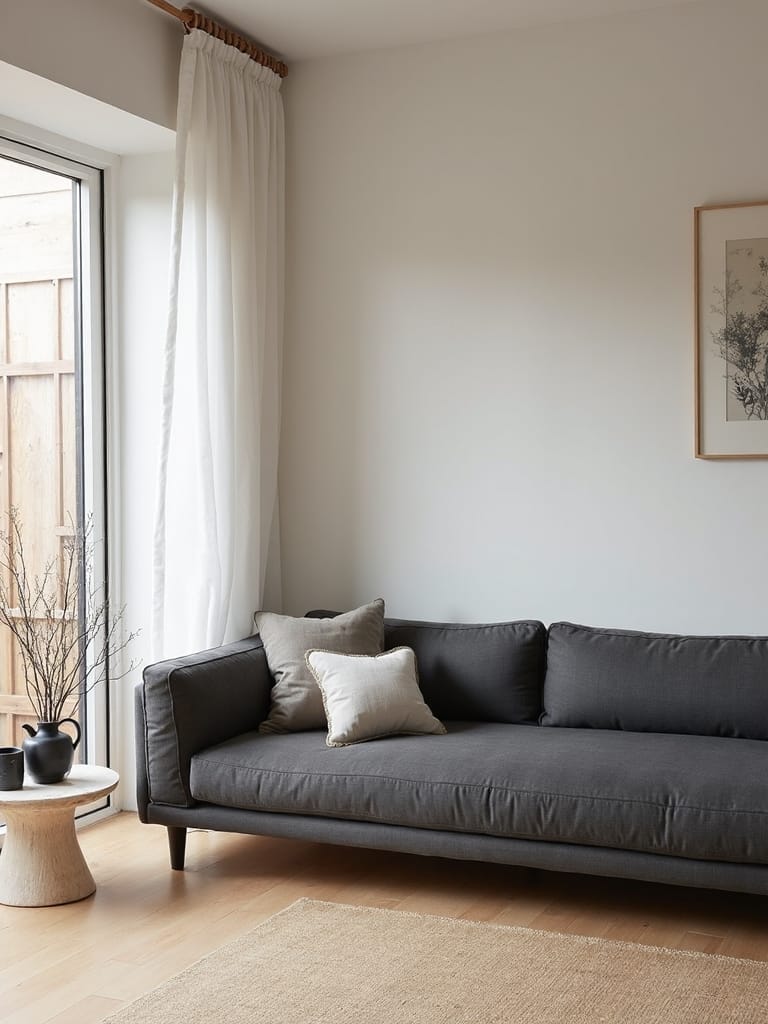
While wooden elements form the foundation of your Japandi design, mastering the interplay between light and dark tones creates visual depth that enhances your small living room.
To achieve perfect balance, pair light walls with deeper furniture pieces.
You’ll create a serene atmosphere by incorporating natural textures through dark brown or charcoal seating against neutral backdrops.
Bold black accents strategically placed throughout will add visual interest while maintaining cozy Japandi principles.
Adding Organic Textures and Materials
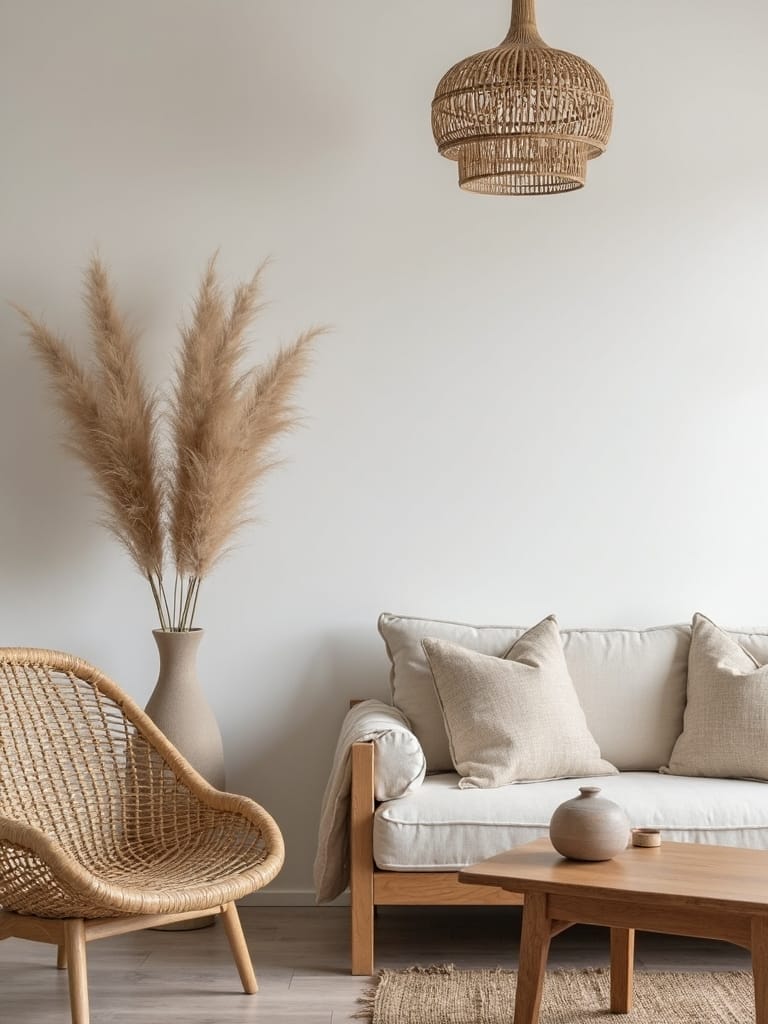
Natural textures and organic materials serve as the cornerstone of authentic Japandi design, bringing warmth and visual interest to your small living room.
Layer organic textures like wool and jute in your rugs and throws, while incorporating natural wood finishes in furniture pieces.
Add handcrafted ceramics that embody the Wabi-Sabi philosophy, and complete the space with indoor plants and natural stone elements for a cozy atmosphere.
Embracing Wabi-Sabi Aesthetics
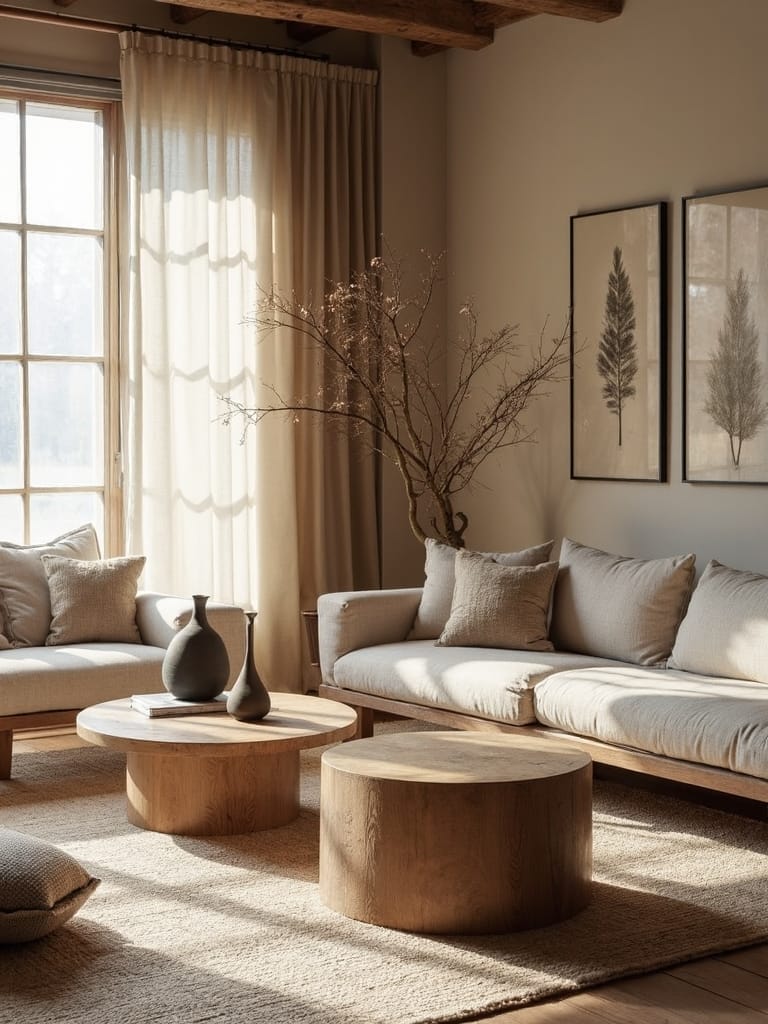
The ancient Japanese philosophy of wabi-sabi brings a deeper dimension to your Japandi-inspired small living room, building upon the organic elements already in place.
Welcome natural materials like reclaimed wood and handcrafted items to create a clutter-free environment that celebrates imperfection.
You’ll find that combining organic textures with simplicity encourages tranquility, while the authenticity of these elements adds warmth to your space.
Strategic Furniture Placement for Flow
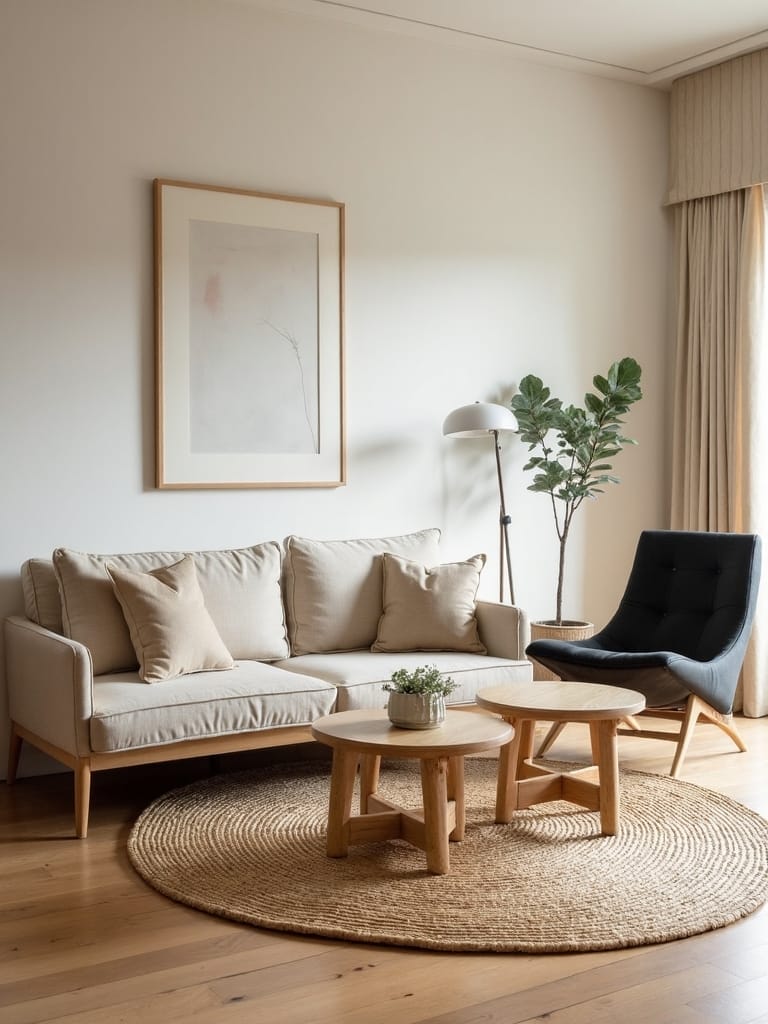
Since furniture placement can make or break a small living room’s functionality, excelling in the art of strategic arrangement becomes essential in Japandi design.
Create clear pathways by positioning low-profile seating against walls, and incorporate multifunctional furniture like storage ottomans.
Add slim accent tables where needed, and use room dividers to define spaces while maintaining an airy, cohesive feel throughout your living area.
Bringing Nature Indoors With Plants
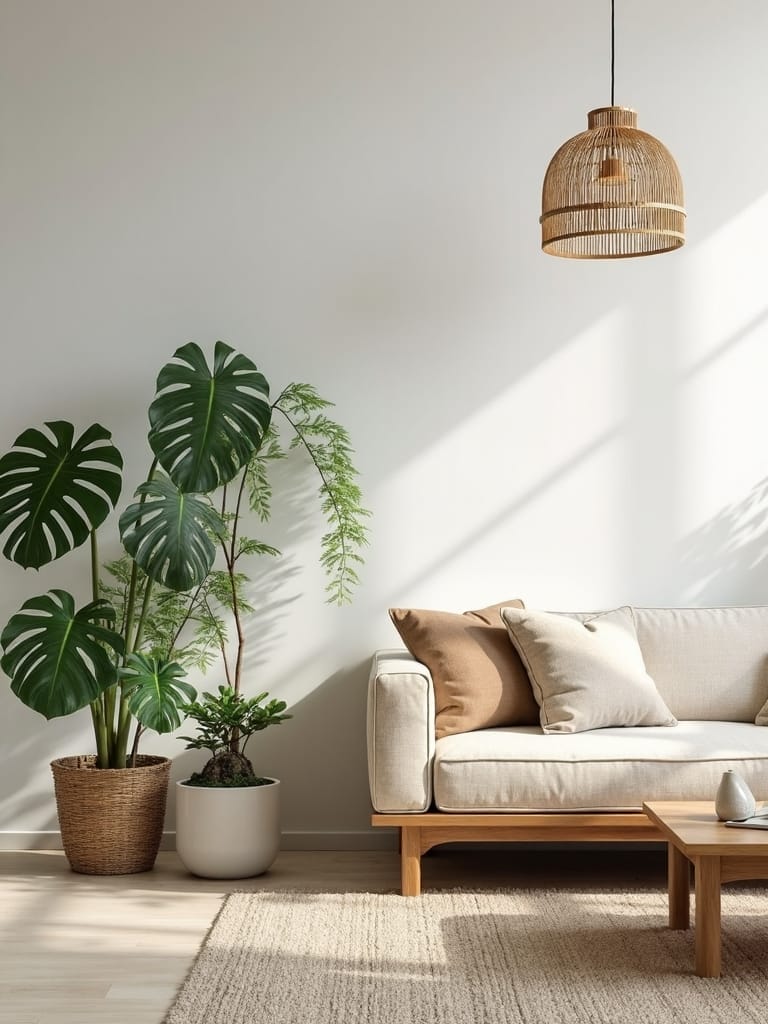
Beyond thoughtful furniture placement, plants serve as living artwork that perfectly embodies Japandi’s harmonious blend of Japanese and Scandinavian design principles.
You’ll enhance your space’s tranquility by incorporating low-maintenance options like snake plants and ferns.
Place them in natural materials such as clay pots or woven baskets to complement organic textures.
Position your plants near windows to maximize natural light while improving indoor air quality and reinforcing the Japandi aesthetic.
Choosing Multi-Functional Storage Solutions

When designing a small Japandi-style living room, clever storage solutions that serve multiple purposes become essential for maintaining minimalist harmony.
Consider ottomans with hidden compartments and coffee tables that double as storage units to maximize your space.
You’ll create a clutter-free environment by incorporating dual-purpose furniture like built-in shelving and benches with storage, preserving the airy feel while embracing practical solutions that complement your minimalist aesthetic.
Layering Soft Textiles and Textures
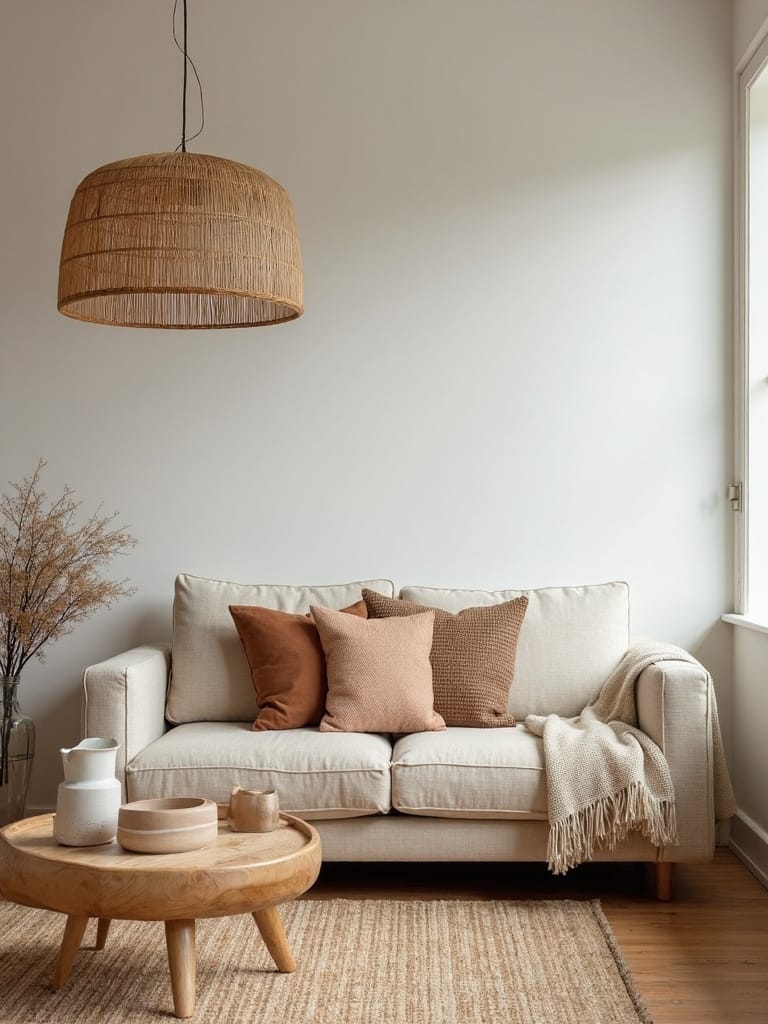
To create a cozy and inviting Japandi-style living room, layering soft textiles and varied textures serves as your secret weapon for achieving perfect balance.
Start by combining natural materials like wool and linen in your cushions and curtains.
Add chunky knit throws and faux fur rugs to enhance the cozy atmosphere while maintaining a minimalist aesthetic.
Let soft furnishings filter natural light while creating a harmonious blend of smooth and plush textures.
Installing Paper Lanterns and Ambient Lighting
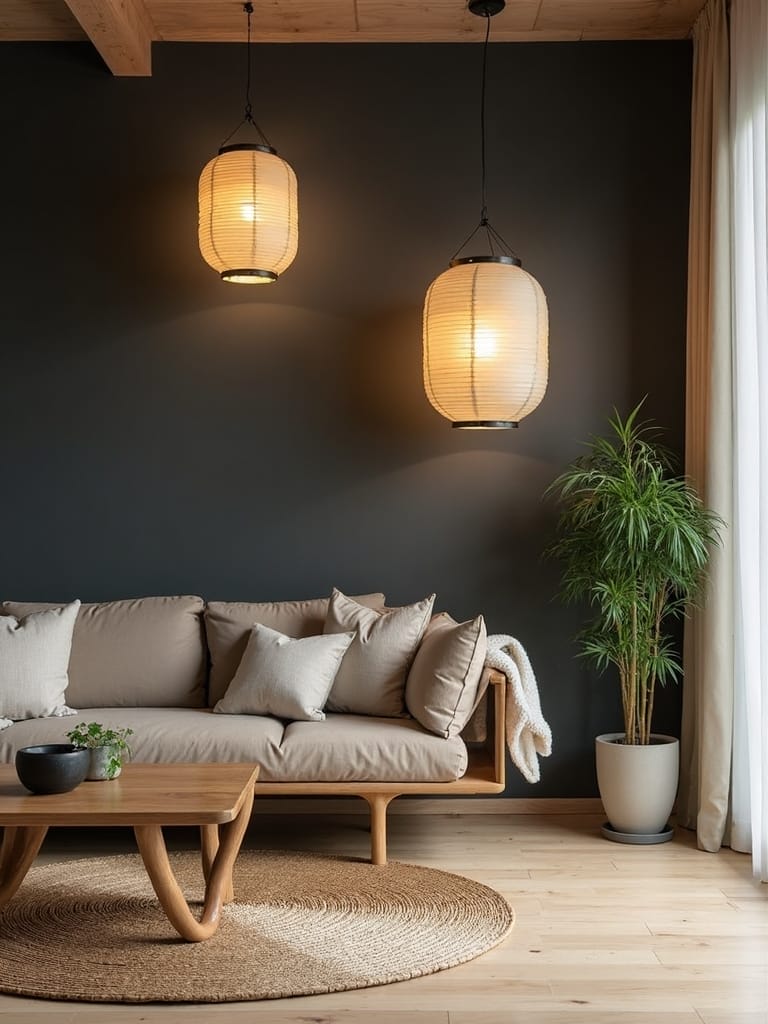
Since proper lighting sets the foundation for a serene Japandi atmosphere, paper lanterns and thoughtful ambient lighting become essential elements in your small living room design.
Select fixtures with clean lines and natural materials to maintain the minimalist aesthetic, combining wall sconces and floor lamps for layered illumination.
Incorporate adjustable lighting options to create a warm ambiance that shifts seamlessly from day to evening activities.
Using Wooden Slats for Space Division

Wooden slats offer a refined solution for dividing your small living space while preserving the harmonious flow of your Japandi-inspired room.
These natural materials create visual interest without compromising the minimalist design principles you’re aiming for.
Displaying Minimalist Wall Art
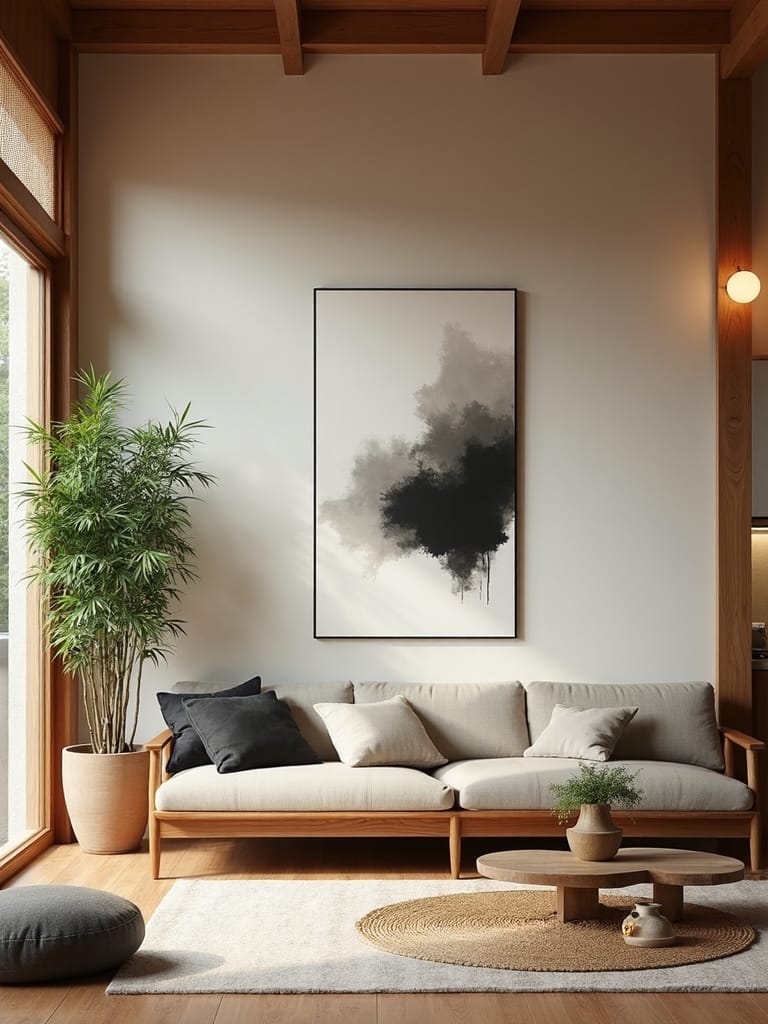
When selecting wall art for your Japandi-inspired living room, choosing minimalist wall art that embodies both Japanese and Scandinavian design principles will create a harmonious focal point.
Opt for pieces featuring neutral color palettes and natural wood frames to maintain a serene atmosphere.
Incorporate handmade ceramics and textured pieces that capture the Wabi-Sabi philosophy, celebrating imperfect beauty while adding subtle visual interest to your space.
Incorporating Sustainable Decor Elements
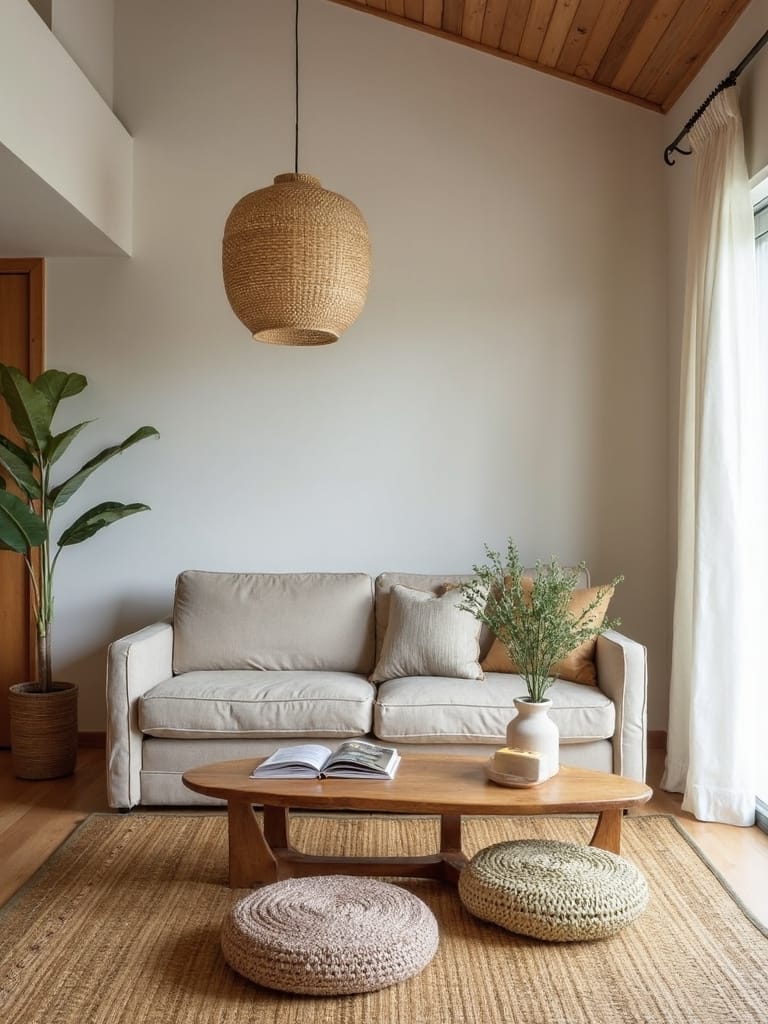
To adopt authentic Japandi style, sustainable decor elements serve as essential building blocks for creating an eco-conscious living space.
Transform your room with sustainable materials like rattan and reclaimed wood, while adding handmade ceramics for artisanal charm.
You’ll enhance the natural aesthetic by incorporating indoor plants and multi-functional furniture pieces that promote space efficiency.
These eco-friendly practices align perfectly with the minimalist lifestyle that Japandi embodies.
Mixing Geometric and Curved Forms

Although geometric shapes provide structure in Japandi design, blending them with curved elements creates a more balanced and inviting small living room.
When mixing geometric and curved forms, pair rectangular sofas with round coffee tables or organic-shaped poufs to achieve a harmonious balance.
This versatile layout enhances visual interest while maintaining a minimalist aesthetic. Natural materials in both angular and curved pieces help create an inviting atmosphere without overwhelming your space.
Conclusion
By embracing Japandi’s harmonious blend of Japanese and Scandinavian design principles, you’ll create a small living room that’s both functional and serene. Remember to prioritize natural materials, maintain clean lines, and incorporate thoughtful storage solutions. Whether you’re adding wooden elements or selecting minimalist furniture pieces, your space will reflect a perfect balance of warmth and simplicity. Let this curated collection of ideas inspire your own peaceful, well-designed sanctuary.

